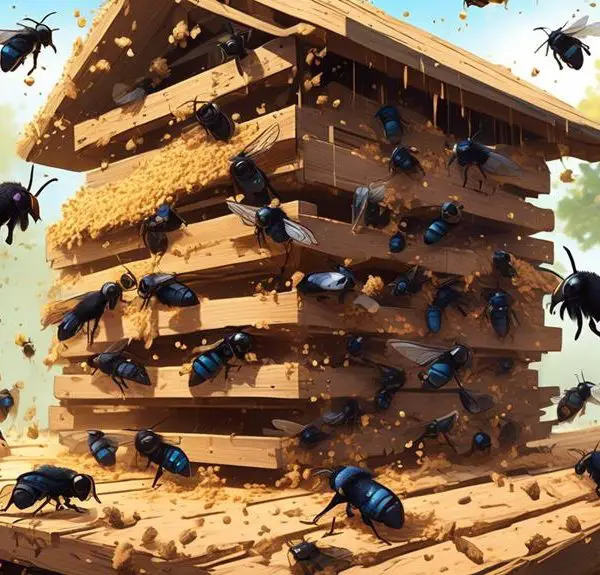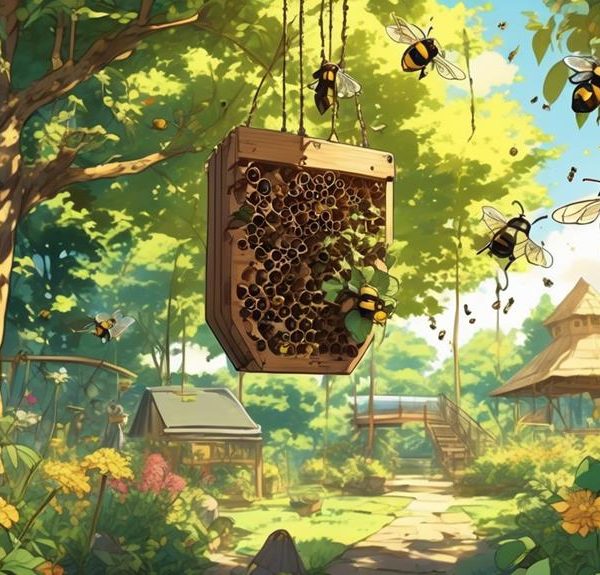Bask in the intrigue of Switzerland's Violet Carpenter Bee, a remarkable insect with a stunning purple sheen and a pivotal ecological role.
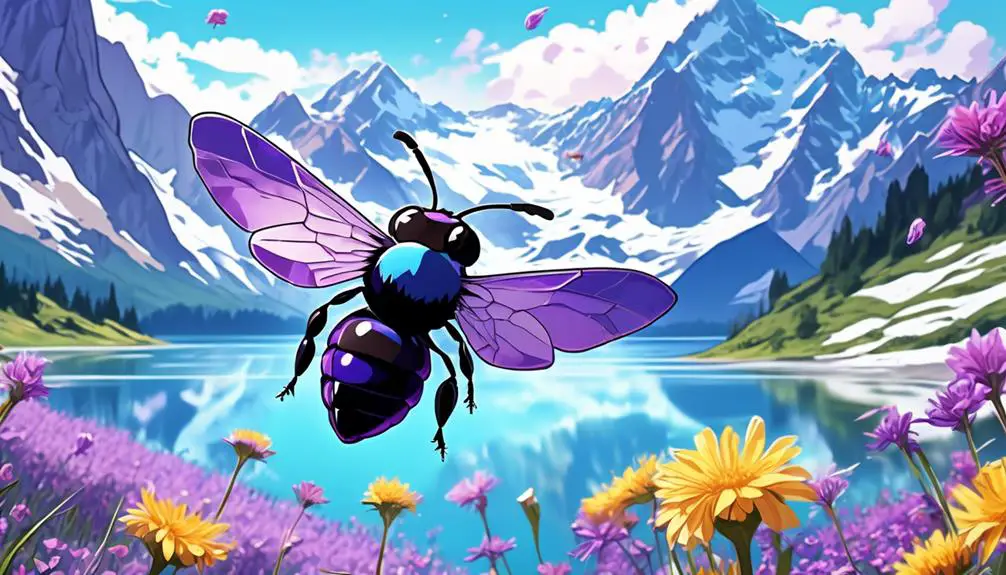
Violet Carpenter Bee Switzerland
You've heard of honeybees, you've seen bumblebees, but have you encountered the Violet Carpenter Bee in Switzerland? This particular bee, known for its distinctive purple-black sheen, is a remarkable specimen within the bee world.
As you explore its unique characteristics, habitat, and life cycle, you'll find that there is much more to this insect than meets the eye. Despite its somewhat intimidating size, it plays a significant role in our ecosystems.
Interestingly, it's not just where it fits in the grand scheme of things, but also how it shapes our understanding of biodiversity in Switzerland that makes this creature a fascinating topic to explore further.
Key Takeaways
- The Violet Carpenter Bee is a large solitary bee species found in Switzerland, known for its striking violet-blue sheen and impressive wingspan.
- It thrives in warm climates and is most active during the summertime, preferring lowland areas with plenty of flowering plants.
- The bee nests in dead wood or hollow stems, and its distribution is influenced by the availability of suitable nesting materials.
- The Violet Carpenter Bee plays a crucial role in the ecosystem as an efficient pollinator, supporting genetic diversity and the survival of flowering plants. However, its burrowing behavior can potentially cause damage to wooden structures and requires management and preventive measures.
Understanding the Violet Carpenter Bee
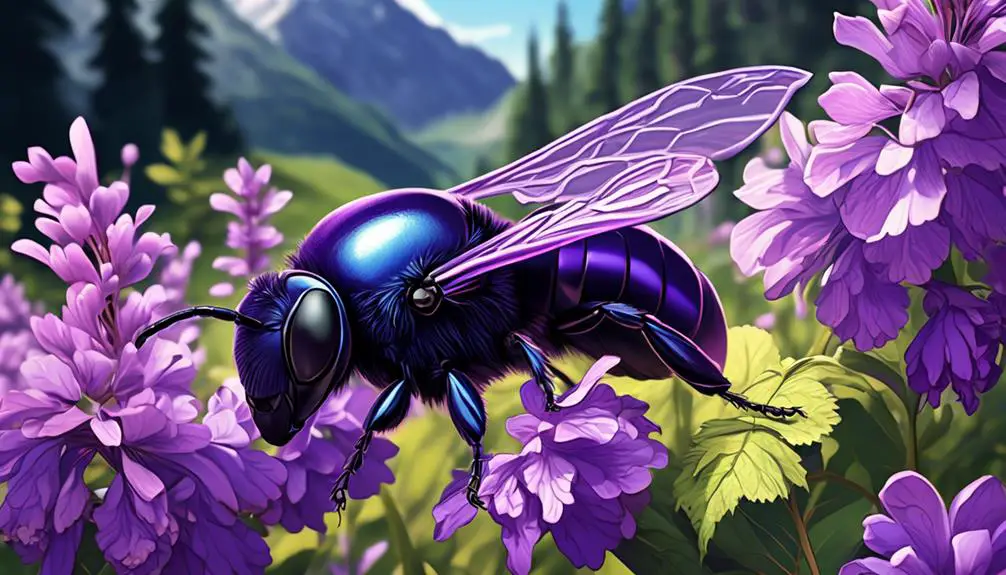
To truly grasp the nature of the Violet Carpenter Bee, it's essential to delve into its unique characteristics, behaviors, and its role within the ecosystem of Switzerland.
This bee, known scientifically as Xylocopa violacea, isn't only distinguished by its large size and impressive, metallic violet-blue coloring, but also by its solitary behavior. Unlike honeybees, which live in hives, you'll often find Violet Carpenter Bees living alone, carving out nests in dead wood or hollow stems.
You'd be fascinated to learn that despite their intimidating size and loud buzz, they're generally harmless to humans. Their diet consists of nectar and pollen, making them valuable pollinators. In Switzerland's ecosystem, their role as pollinators is vital. They promote biodiversity by aiding in the reproduction of plants.
However, their preference for old wood for nesting can be problematic. They're known to burrow into wooden structures, causing potential damage.
In the grand scheme, understanding their behaviors and characteristics is key to appreciating their ecological importance and addressing any issues they may pose. So, when you next encounter a Violet Carpenter Bee in Switzerland, you'll view it with newfound respect and understanding.
Habitat and Distribution in Switzerland
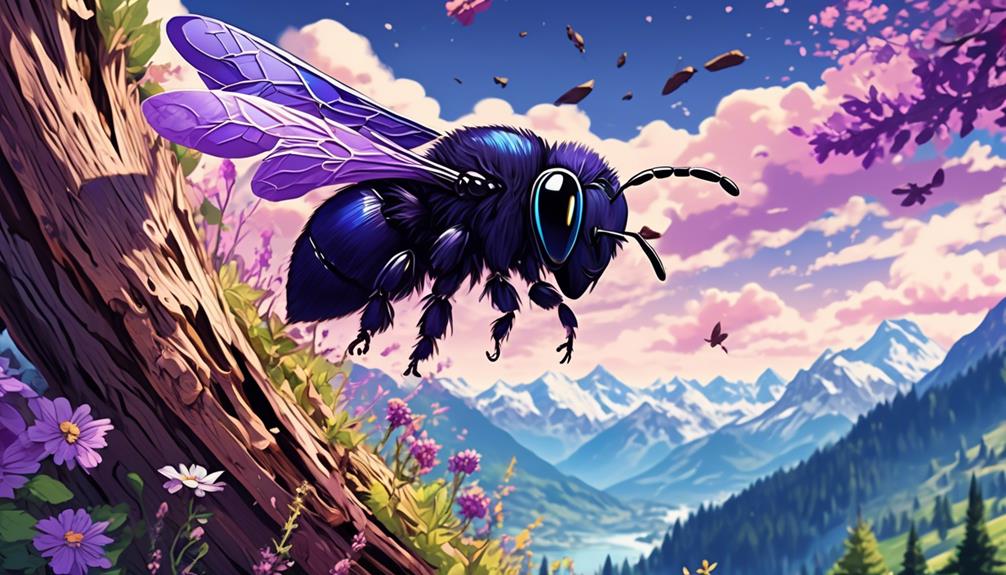
Having grasped the nature and behavior of the Violet Carpenter Bee, let's now explore its habitat and distribution across Switzerland.
This species, known scientifically as Xylocopa violacea, thrives in warm climates and is particularly active during the summertime. In Switzerland, they're usually found in lowland areas with plenty of flowering plants, their primary food source.
The Violet Carpenter Bee's distribution in Switzerland is quite fascinating. It's not uniformly spread across the country. Instead, it's more prevalent in the warmer, sunnier cantons, such as Ticino, Valais, and Geneva. These regions offer ideal conditions, including ample sunlight and an abundance of flowering plants, that promote the proliferation of this species.
Moreover, these bees are solitary creatures, preferring to nest in dead wood or hollow stems rather than forming colonies like their honeybee counterparts. This behavior further influences their distribution, as they tend to gravitate towards areas abundant in their preferred nesting materials.
Violet Carpenter Bee's Unique Features
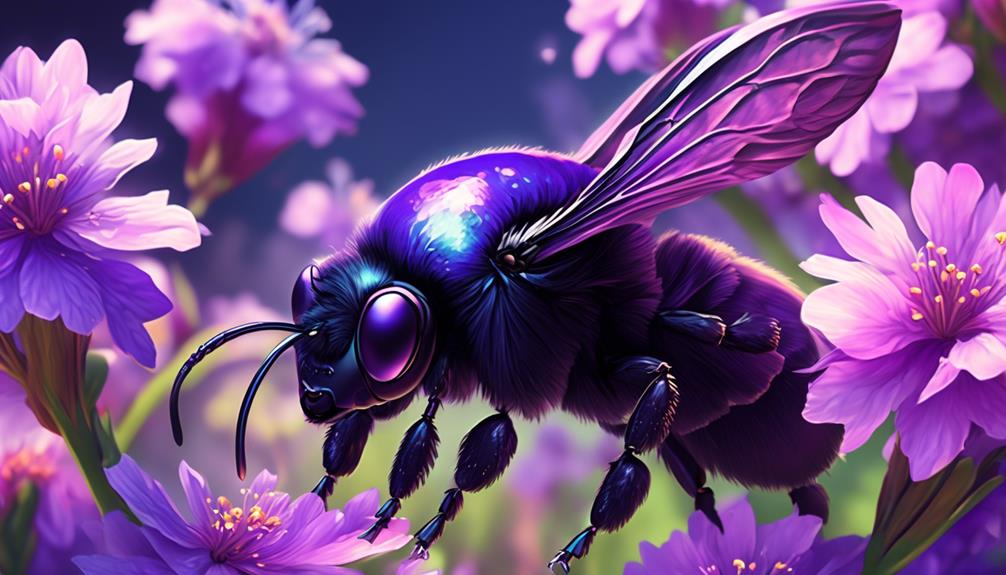
Diving into the unique features of the Violet Carpenter Bee, you'll find it's not just their striking color that sets them apart. These bees are among the largest in Europe, reaching up to 3 cm in length. Their robust bodies, coupled with a wingspan of 4 cm, make them a formidable sight.
Their name comes from their unique color and behavior. The deep violet-blue sheen on their bodies is unlike any other bee species. Meanwhile, their carpenter moniker is derived from their ability to drill into dead wood or plant stems where they construct their nests.
Take a look at the table below for a summary of their unique features:
Feature | Description |
|---|---|
Size | Up to 3 cm in length, 4 cm wingspan |
Color | Deep violet-blue sheen |
Nesting Behavior | Drills into dead wood or plant stems |
Distribution | Among the largest bees in Europe |
These distinctive traits make the Violet Carpenter Bee an interesting subject of study for entomologists and nature enthusiasts alike. Understanding these bees' unique features is a stepping stone to appreciating their role in the ecosystem.
The Life Cycle of Violet Carpenter Bee
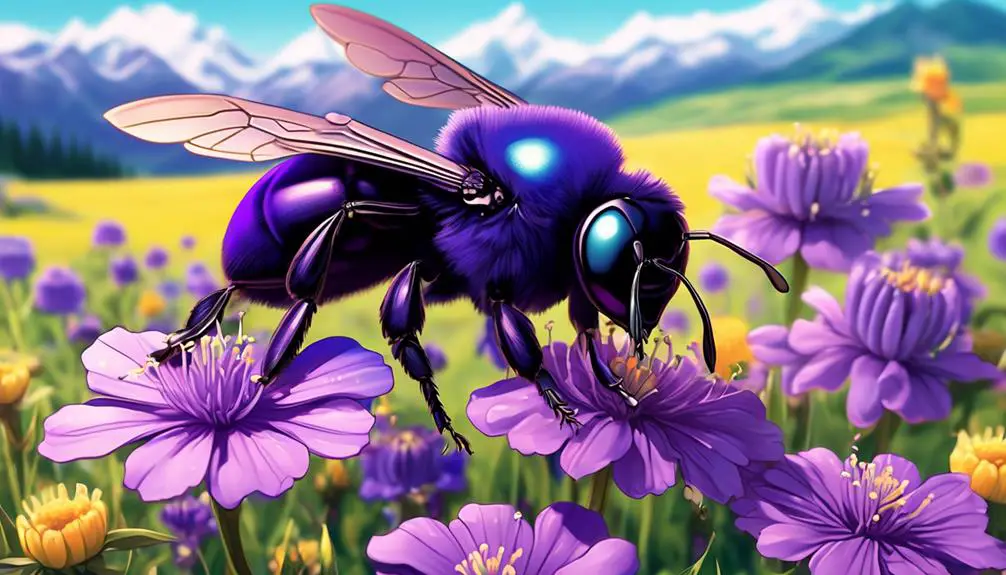
Let's delve into the intriguing life cycle of the Violet Carpenter Bee, a journey that unfolds in a series of meticulously orchestrated stages.
This begins with the female bee laying her eggs in a wooden burrow, often in decaying wood or in the hollow stems of plants. She'll then seal each egg in its cell with a mixture of chewed wood and saliva, creating a protective barrier.
The eggs then enter the larval stage. As a larva, the bee consumes the pollen and nectar stored in the cell by the female. It's in this stage that the bee will undergo a series of transformations, developing from a simple larva into a fully formed bee.
This metamorphosis process is called pupation, and it's during this stage that the bee develops its distinctive violet sheen and strong wings. This stage can last from several weeks to a few months, depending on environmental factors.
The bee then emerges as an adult, ready to mate and continue the cycle. This process, from egg to adult, is a testament to the intricate design of nature, demonstrating the resilience and adaptability of the Violet Carpenter Bee.
Importance of Violet Carpenter Bee to Ecosystem
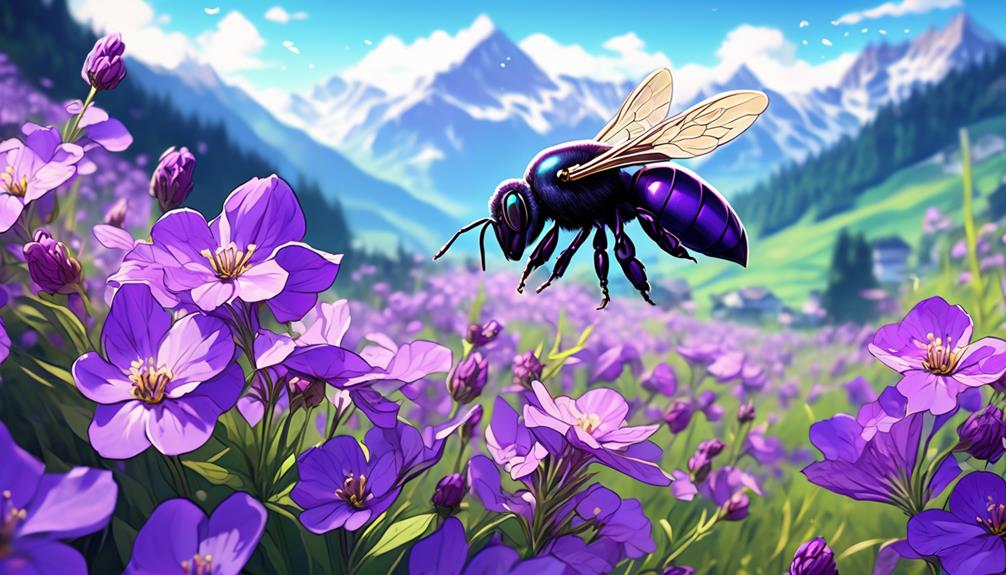
Beyond their striking appearance, Violet Carpenter Bees play a crucial role in the ecosystem, acting as efficient pollinators for a wide variety of plant species. These bees are particularly good at cross-pollination, where pollen from one flower is transferred to the stigma of another. This process is crucial for the genetic diversity of plant populations.
In Switzerland, these bees contribute significantly to the ecosystem's health. By pollinating flowering plants, they support the survival of these species and indirectly contribute to the food chain. They're instrumental in sustaining the biodiversity of the Swiss landscape, making them a keystone species in the ecosystem.
The loss of Violet Carpenter Bees could lead to a collapse in the pollination process, endangering plant species and the organisms that rely on them for survival. Therefore, their preservation isn't just about maintaining the aesthetic appeal of these bees, but ensuring the survival of ecosystems.
Conclusion
You've now delved into the world of the Violet Carpenter Bee, a unique species with a significant presence in Switzerland. These bees, with their distinct features and fascinating life cycle, play a crucial role in our ecosystem.
Their contribution to biodiversity and pollination is vital. Understanding their behavior and importance can foster a greater appreciation for these intriguing insects and the intricate web of life they represent.

